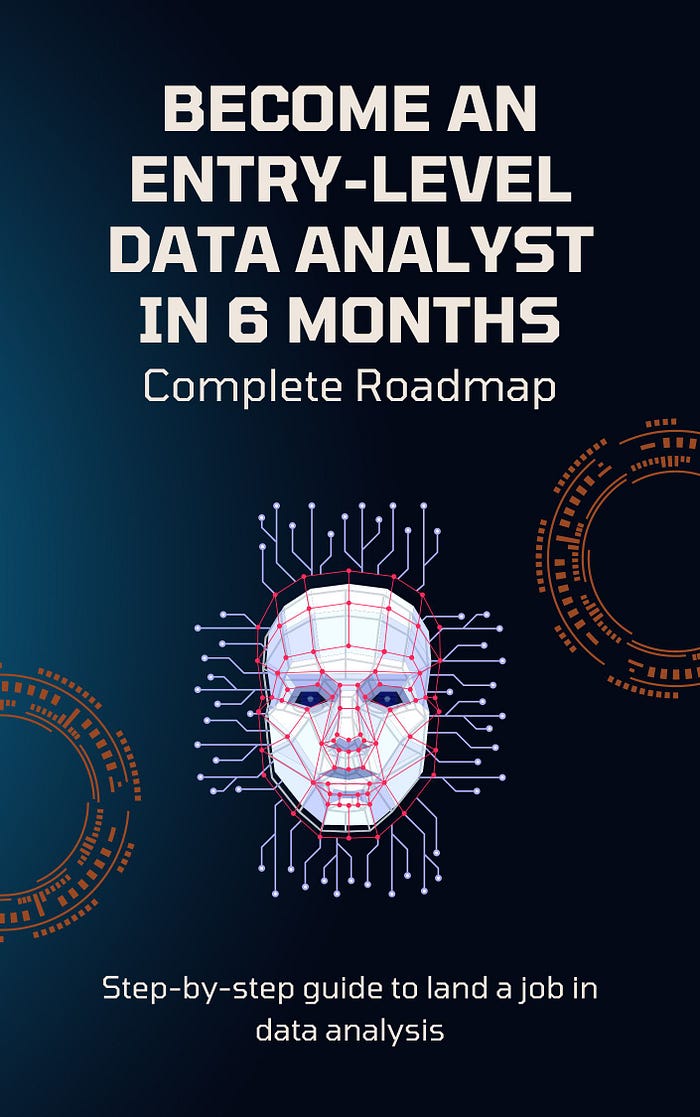Step-by-step guide to land a job in data analysis.

Particularly since the pandemic, companies are realizing the critical value of data-driven decision making and are investing in building their data capabilities.
In fact, a report by the US Bureau of Labor Statistics projects that employment of operations research analysts, which includes data analysts and data scientists, will grow by 25% from 2021 to 2031, much faster than the average for all occupations.
LinkedIn’s latest report shows that data analysis is in high demand as the 6th most sought-after hard skill in 2023. Not surprisingly, SQL and Python, which are vital skills for data analysts, were ranked 2nd and 4th respectively. These stats are clear indicators that data analysis skills are highly valued in today’s job market, and the need for data analysts is only going to increase in the years to come.
The path to becoming a data analyst or scientist is not an easy one, but it’s certainly rewarding. In this article, I will attempt to describe a comprehensive six-month plan to help you gain the necessary skills, and practical experience, to launch your data career.
Month 1: Build Foundational Knowledge
The first month is all about building a strong foundation in statistics, programming, and databases. Here’s a suggested breakdown of what need to learn:
Week 1: Introduction to Statistics and Programming
- Basics of descriptive and inferential statistics
- Introduction to programming concepts
Week 2: Introduction to Relational Databases, SQL, and Practice
- Understand relational databases and their importance in data analysis
- Learn SQL to extract and manipulate data from databases
- Practice working with databases using real-world datasets
Week 3: Intermediate Level to Statistics and Programming
- Advanced concepts in statistics such as hypothesis testing and regression analysis
- Intermediate level programming concepts such as functions, loops, and control structures
Week 4: R and Intermediate to Advanced Excel
- Introduction to R programming language and its applications in data analysis
- Intermediate to advanced Excel functions and formulas for data analysis
Month 2: Practice Data Manipulation and Analysis
The second month needs to be focused on practical data manipulation and analysis using free datasets.
- Use free datasets for practicing SQL and Python (from Kaggle, UCI Machine Learning Repository, or Data.gov)
- Work with the Pandas library in Python for data manipulation and analysis
- Learn advanced SQL and data transformation techniques
- Intermediate to advanced Excel functions and formulas for data analysis
Month 3: Learn Data Visualization and Communication
Spend the third month learning about data visualization and communication.
Week 1: Introduction to Data Visualization
- Basics of data visualization and its importance in data analysis
- Take courses on data visualization and business intelligence tools such as Tableau and PowerBI
Week 2: Advanced Data Visualization Techniques
- Learn advanced data visualization techniques such as heatmaps, treemaps, and network graphs
- Apply the best practices for designing effective data visualizations
Week 3: Communicating Insights with Data
- Learn how to effectively communicate insights and findings using data to non-technical people. I suggest you start teaching data concepts to other people as a practice to simplify complex principles into easy ingestible ones.
- Storytelling with data and its importance in data communication
Week 4: Interactive Data Visualization
- Introduction to interactive data visualization tools such as D3.js and Plotly
- Building interactive dashboards for data analysis and communication. These can be done in PowerBI or using Python with Dash for example, or R and Shiny.
Month 4: Gain Practical Experience and Build a Portfolio
You know the foundations. You have some practice. The fourth month needs to be focused on gaining practical experience and building a strong portfolio.
- Four ways to gain practical experience in data analysis: Freelance projects (upwork, freelancer, Fiverr, SolidGigs), internships (search on Indeed), personal projects, seek mentorship and feedback.
- Build a strong portfolio to showcase your skills and experience
Month 5: Expand Your Skillset
During month #5, focused your attention on expanding your skillset beyond the basics. such as:
- Database systems, data warehousing, and big data technologies
- Cloud computing and its applications in data analysis
- Start builsing a LinkedIn profile, make connections for networking and job opportunities
Month 6: Job Search
The final month is focused on preparing for and executing a successful job search.
- Apply for entry-level job opportunities
- Treat a job search as a full-time job
- Build a strong resume and cover letter (ATS-friendly)
- Apply for 200 jobs that month. That’s the name of the game.
- Send a thank-you note after each interview
Becoming a data analyst or scientist requires a lot of hard work, dedication, and a strong foundational knowledge. if you’re serious about starting a career in data science, following this six-month plan can help you gain the necessary skills and practical experience to launch your career.
If you want to know more, join my The Data Analyst Toolkit free email course. I provide guidance on securing jobs in data analysis,
along with tutorials on SQL, Python, Excel, R, and PowerBI. Get my “Complete Roadmap to Become an Entry-Level Data Analayst Job in 6 Months”, a detailed 33 page PDF, as soon as you subscribe.
It’s important to stay committed to the plan, set achievable goals, and put in the work to achieve them. Remember, building a strong foundation is crucial for success, and with hard work and dedication, you can achieve your goals in the field of data science.
Good Luck!
Leave a Reply